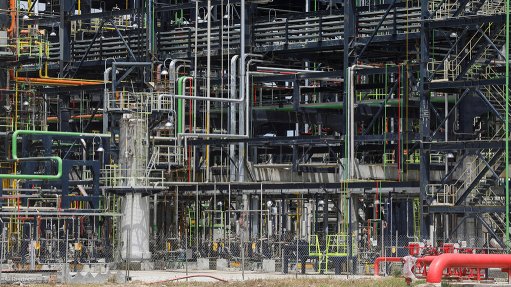Unintended consequences
One of the songs of the Beatles (remember them?) has the words: “Do you want to know a secret? Do you promise not to tell? Whoa, oh, oh.” So, here’s the thing: Elon Musk did not invent the modern electric car any more than Henry Ford invented the general people’s car.
At the starting gate was American Alan Cocconi, who started his namesake company, AC Propulsion, to build electric vehicles (EVs) using his distinctive technology. He sought to make a long-range, high- performance EV to shake off the notion that EVs were slow, and unattractive. So he acquired a Honda Ballade, fitted lead acid batteries, all in the firewall (the hump which runs the length of cars of the 1990s), and made a controller which converted battery direct current voltage to alternating current voltage. Here was a good idea: the car would need a motor rated at at least 22 kW. A 400 V, 50 Hz three-phase aluminium frame motor like this weighs about 130 kg and this, plus batteries, made the car overweight. But Cocconi was smart; he used a motor from a passenger aircraft, which routinely operates at 400 Hz and is much lighter than the 50 Hz motors. The shaft speed is also much higher (about 20 000 rpm, compared with 1 450 rpm). Cocconi connected the motor to one side of a Honda gearbox in second gear and it all worked out.
In 1990, Eskom bought one of Cocconi’s EVs and they invited me to drive it. It was a thrill – accelerated like smoke and drove very well.
Time has moved on and now we have Tesla-hulle selling its cars. But something to take away from this tale – what differentiates an EV from a modern internal combustion engine (ICE) car is the following: an EV has batteries, an electric motor, control electronics and a gearbox. If we compare these components with a fuel tank, an ICE, a multispeed gearbox, a clutch and all, you have to realise that the EV has fewer expensive things than an ICE car. In fact, compellingly, there is a lot less expense there.
So, we’ve all been here before, not so? The first handheld calculators were very expensive, as were the first computers of any worth. The first cellphones cost a pretty penny. This is exactly where we are with EVs. This is why all the carmakers are jumping on this bandwagon; an EV with a Merc body selling at the price of an ICE Merc is making a tidy profit. An ICE has a lot of moving parts, all of which have to be assembled and manufactured. An EV motor (now often a permanent magnet motor) has much fewer parts and the gearbox is similarly very much less complex. Thus, no wonder all the auto manufacturers can promise to not sell ICE cars by 2030 – because EVs will take over, as they will be cheap and profitable for the manufacturers. Unless the Western manufacturers are stupid, drunk or stoned (not as remote as it sounds when you see some modern designs) it is almost certain that many future cheap EVs will come from China and the Far East. Right now, many permanent magnet motors do as do lithium batteries. Interesting times. Some of us (I am one) are never going to drive an EV. There has not been near enough safety testing, in my jaundiced view. Others just want a car they can afford to own and afford to drive. There is also the snob appeal: who wants to pick up their date in a vehicle which sounds like an R2D2? (Okay, this only applies to those of us who will ever have another date, I guess.)
If we follow the path of the calculator, the cellphone and the computer, all EVs are going to become cheap as chips. Even if this does result in increased traffic levels, it may not be such a problem – the EVs don’t pollute. So we’ll see. But now we know why Merc, Honda, Fiat, GM, Ford, among others, are leaping up for EVs – because they can make a real quick killing.
Article Enquiry
Email Article
Save Article
Feedback
To advertise email advertising@creamermedia.co.za or click here
Comments
Press Office
Announcements
What's On
Subscribe to improve your user experience...
Option 1 (equivalent of R125 a month):
Receive a weekly copy of Creamer Media's Engineering News & Mining Weekly magazine
(print copy for those in South Africa and e-magazine for those outside of South Africa)
Receive daily email newsletters
Access to full search results
Access archive of magazine back copies
Access to Projects in Progress
Access to ONE Research Report of your choice in PDF format
Option 2 (equivalent of R375 a month):
All benefits from Option 1
PLUS
Access to Creamer Media's Research Channel Africa for ALL Research Reports, in PDF format, on various industrial and mining sectors
including Electricity; Water; Energy Transition; Hydrogen; Roads, Rail and Ports; Coal; Gold; Platinum; Battery Metals; etc.
Already a subscriber?
Forgotten your password?
Receive weekly copy of Creamer Media's Engineering News & Mining Weekly magazine (print copy for those in South Africa and e-magazine for those outside of South Africa)
➕
Recieve daily email newsletters
➕
Access to full search results
➕
Access archive of magazine back copies
➕
Access to Projects in Progress
➕
Access to ONE Research Report of your choice in PDF format
RESEARCH CHANNEL AFRICA
R4500 (equivalent of R375 a month)
SUBSCRIBEAll benefits from Option 1
➕
Access to Creamer Media's Research Channel Africa for ALL Research Reports on various industrial and mining sectors, in PDF format, including on:
Electricity
➕
Water
➕
Energy Transition
➕
Hydrogen
➕
Roads, Rail and Ports
➕
Coal
➕
Gold
➕
Platinum
➕
Battery Metals
➕
etc.
Receive all benefits from Option 1 or Option 2 delivered to numerous people at your company
➕
Multiple User names and Passwords for simultaneous log-ins
➕
Intranet integration access to all in your organisation
















